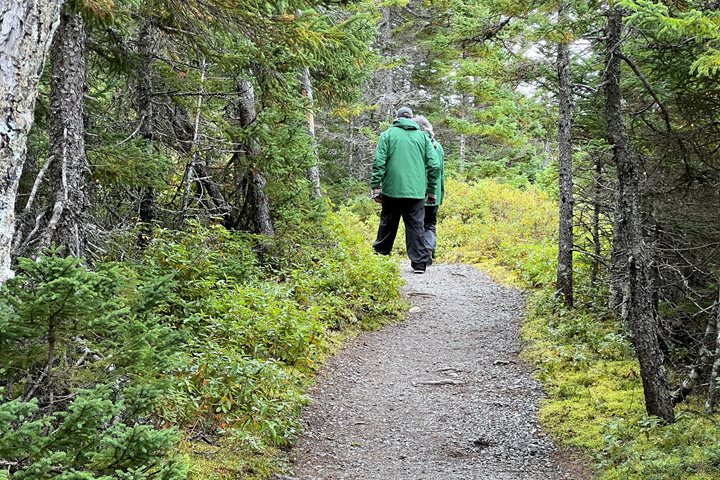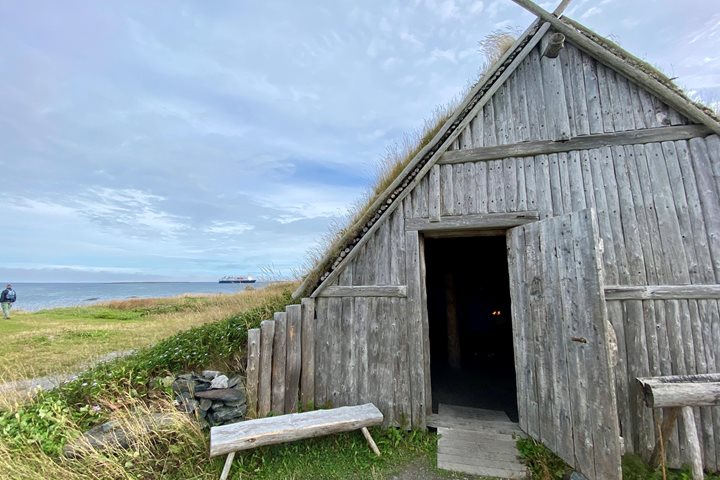This morning, National Geographic Explorer arrived to one of the most beautiful and geologically as well as biologically impressive places in Newfoundland: the Gros Morne National Park. Guests and naturalists spent the morning and afternoon engaged in various activities on land, including long hikes and visits to the Tablelands. Those on the hikes crossed through the beautiful spruce and fir forest full of different berry-producing plants, fungi, and ferns. On the way to the top of Lookout Hill, the party found a male spruce grouse perched on a dry log. This big bird is hard to see since it is very shy and secretive. At the top of the hill, we admired the flowers of the carnivorous pitcher plants, spruces, firs, and tamaracks in their ‘tuckamore’ habitat, a special morphology produced by the selective force of the wind. We all enjoyed the magnificent views of the alpine tundra as well as of the glacier-shaped fjord that constitutes Bonne Bay. In the distance, the Tablelands, composed of very old Earth mantle, revealed themselves as one of the main attractions of the park. Right at the base of the Tablelands, peridotite rocks populated the ground, and little arroyos crossed over the whole area with at least four species of carnivorous plants – sundews, pitcher plants, bladderworts, and butterworts.
In the afternoon, we visited the shores of Green Point, where the transition between the Cambrian to the Ordovician periods (485 million years ago!) were in sight as folded, crushed, vertical cliffs of marine sediments in thousands of layers of sandstone and mudstone. This place marks a great extinction event of trilobites and other organisms, but it is full of brachiopods and conodonts. Later, the parties ended the visit by gathering at Lobster Cove to admire an old lighthouse and the beautiful, natural scenery.







